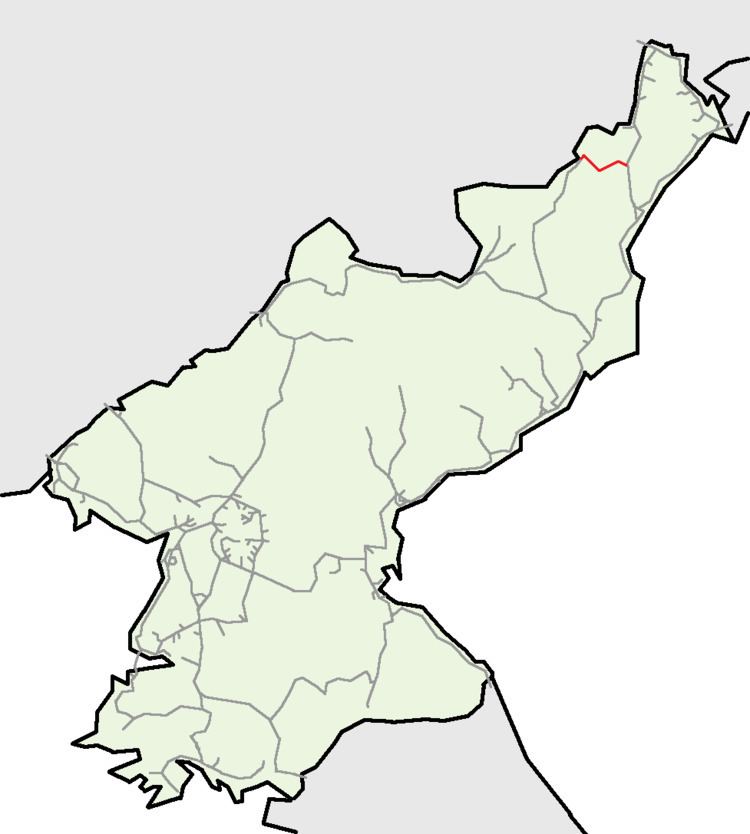Status Operational Stations 13 | Termini KomusanMusan | |
 | ||
Opened Stages between 1927-19291 May 1940 (converted tostandard gauge) Depot Cholsong Chongnyon Station | ||
The Musan Line is an electrified standard-gauge secondary mainline of the North Korean State Railway running from Komusan on the Hambuk Line to Musan, where it connects to the narrow-gauge Paengmu Line. The section from Komusan to Sinch'am is double tracked.
Contents
The line starts at Komusan on the Hambuk Line, following the Susŏngch'ŏn stream through the Hamgyŏng Mountains of Puryŏng and Musan Counties to Musan. The line is 57.9 km in length, with 13 stations.
There is a sorting yard at Musan Station and locomotive facilities at Ch'ŏlsong.
History
In order to exploit the rich iron deposits of the Musan region, the privately-owned Chosen Railway began construction of this line, calling it the Hambuk Line (not to be confused with the current Hambuk Line, which at that time was part of the Hamgyŏng Line). The line was opened in two parts - the Komusan-Sinch'am section opening on 20 August 1927, and the Sinch'am-Musan segment being opened on 15 November 1929. On 1 February 1937, Musan Ch'ŏlsan station was opened.
Originally built as a narrow-gauge line, the conversion to standard gauge was completed on 1 May 1940, and the extension to Musan Kangan station was completed then as well. On 1 April 1944, the line was absorbed into the Chosen Government Railway; at the same time, the line was given its current name, Musan Line, and the extension to Musan Kangan station was closed.
In order to facilitate the transport of ironstone from the Musan Mining complex, the 33.6 km section between Sinch'am and Komusan was double-tracked, and electrification of the line was completed in 1977.
Freight
Freight traffic on the Musan Line is 7.5 times greater in the eastbound (Musan-Komusan) direction than the reverse. 94.2% of the freight moved towards Komusan is magnetite ore from the Musan Mining Complex; timber accounts for 4.3%. From Komusan to Musan coal forms the majority of freight, along with other necessities - grain, fertiliser, cement etc. A large portion of westbound trains consist of empty cars bound for the mines at Musan.
Most traffic on the line is between the Musan Mining Complex and the Kim Chaek Steel Complex, the Ch'ŏngjin Steel Works, the Sŏngjin Steel Complex and export goods to Namyang Station for forwarding to China.
Passenger
There are two passenger trains known to operate on this line:
There are also local trains running between Musan and Ch'ŏngjin at the southern junction of the Hambuk and P'yŏngra lines. Further, there are several daily commuter trains for workers between Musan and Ch'ŏlsong and for students between Musan and Komusan.
Route
A yellow background in the "Distance" box indicates that section of the line is not electrified.
Musan Mining Branch
Not electrified.
